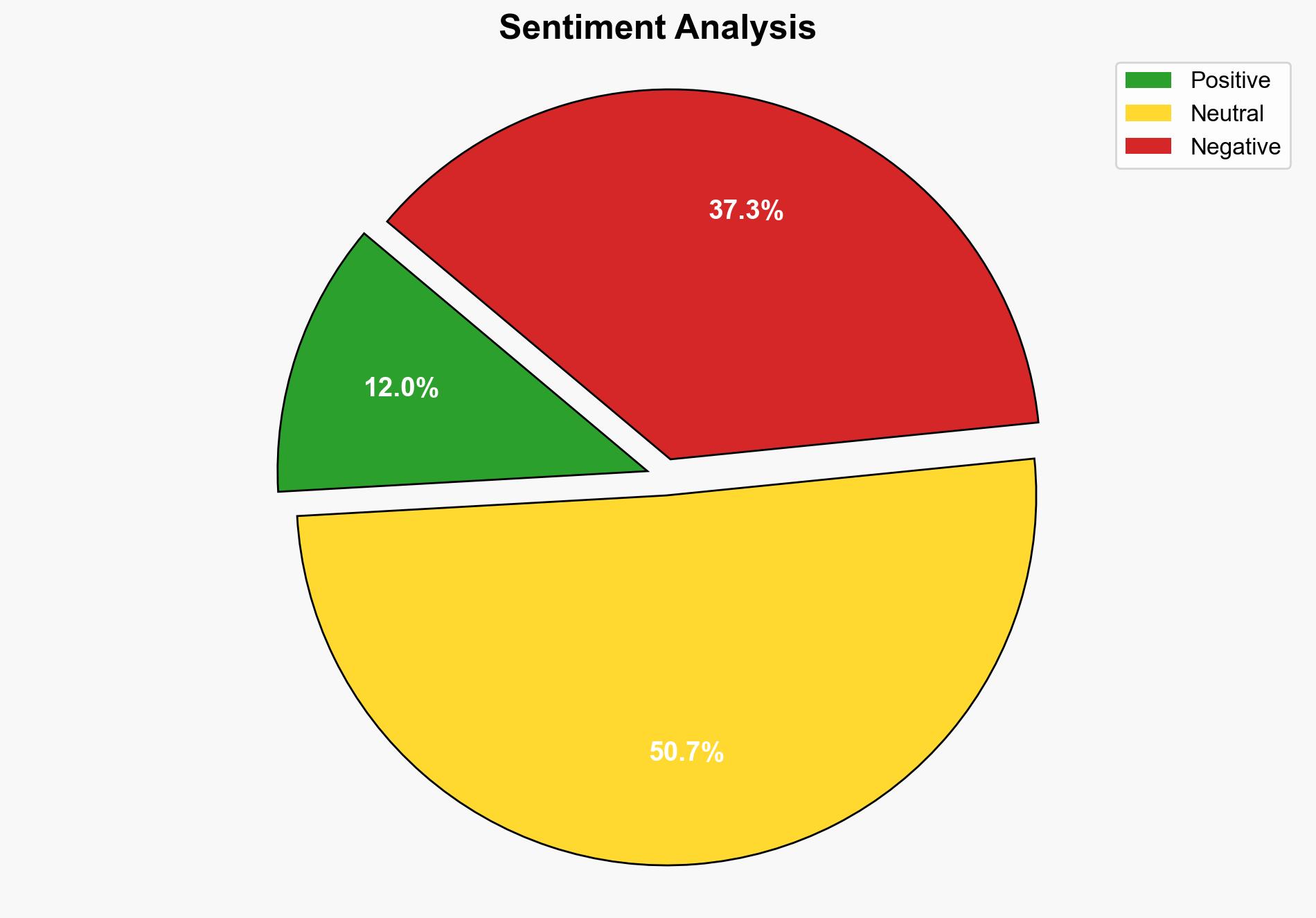Missing the Full Story Bias and gaps in Gaza War coverage – Israelnationalnews.com
Published on: 2025-07-27
Intelligence Report: Missing the Full Story Bias and gaps in Gaza War coverage – Israelnationalnews.com
1. BLUF (Bottom Line Up Front)
The analysis indicates a significant bias in the media coverage of the Gaza War, with a tendency to portray Israel negatively while minimizing or omitting the actions of Hamas. The hypothesis that the coverage is intentionally skewed to influence international opinion against Israel is better supported. Confidence level: Moderate. Recommended action: Engage in strategic communication efforts to provide balanced narratives and counteract biased reporting.
2. Competing Hypotheses
1. **Hypothesis A**: The media coverage is biased against Israel, intentionally omitting key facts about Hamas’s actions to sway public opinion and international pressure against Israel.
2. **Hypothesis B**: The media coverage reflects a lack of comprehensive information and journalistic oversight, leading to unintentional bias and incomplete narratives.
Using the Analysis of Competing Hypotheses (ACH) 2.0, Hypothesis A is better supported due to the consistent pattern of omission and skewed narratives highlighted in the source. The deliberate use of emotionally charged language and the omission of critical context suggest intentional bias rather than mere oversight.
3. Key Assumptions and Red Flags
– **Assumptions**: Hypothesis A assumes intentional editorial decisions to influence public perception. Hypothesis B assumes journalistic oversight and lack of access to comprehensive information.
– **Red Flags**: The consistent omission of Hamas’s actions and the emotionally charged language used in reporting are red flags indicating potential bias.
– **Blind Spots**: The analysis may not fully account for internal editorial pressures or geopolitical influences on media outlets.
4. Implications and Strategic Risks
The biased media coverage could exacerbate geopolitical tensions, influencing international diplomatic stances and potentially leading to increased isolation of Israel. This could also impact public opinion, affecting international aid and policy decisions. The lack of balanced reporting may hinder conflict resolution efforts by perpetuating misinformation and misunderstanding.
5. Recommendations and Outlook
- Develop and disseminate balanced narratives through strategic communication channels to counteract biased reporting.
- Engage with international media to provide comprehensive information and context about the conflict.
- Scenario-based projections:
- Best Case: Balanced reporting leads to informed international discourse and constructive diplomatic engagement.
- Worst Case: Continued biased coverage results in increased geopolitical tensions and isolation of Israel.
- Most Likely: Partial improvement in media narratives with ongoing challenges in achieving balanced coverage.
6. Key Individuals and Entities
– David Ignatius
– Committee for Accuracy in Middle East Reporting in America (CAMERA)
– Hamas
7. Thematic Tags
national security threats, media bias, geopolitical influence, strategic communication





